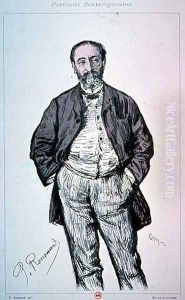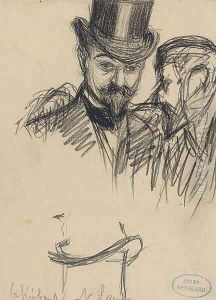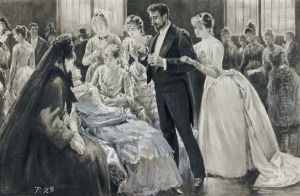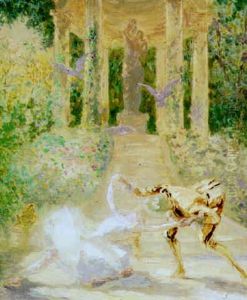Renouard, Charles Paul Paintings
Charles Paul Renouard, born on December 31, 1845, in Cour-Cheverny, France, was an accomplished painter, etcher, and illustrator, known primarily for his works that depicted the lives of the working class, including scenes of the law courts, theaters, circuses, and the harsh realities of the industrial revolution.
Renouard received his artistic training at the École des Beaux-Arts in Paris, under the tutelage of Isidore Pils and Henri Lehmann. He began his career as an illustrator, contributing to various periodicals such as 'Le Monde Illustré' and 'L'Illustration'. His early works were mainly caricatures and scenes of Parisian life, reflecting the influence of Honoré Daumier, another French artist celebrated for his social commentary.
During his lifetime, Renouard witnessed significant historical events, such as the Paris Commune of 1871, which had a profound impact on his work. He developed a keen interest in depicting the lives of the common people, and his illustrations often carried a sense of empathy and social awareness. He became particularly noted for his depictions of the legal world, capturing the drama and emotion of courtroom scenes with a poignant realism.
Renouard's talent was not confined to illustration. He was also a skilled etcher and lithographer, and his technical expertise in these areas allowed him to create prints that were rich in detail and texture. His print series on the Paris Opera and the Comédie Française are particularly notable for their vibrancy and the way they capture the energy of their respective settings.
Throughout his career, Renouard exhibited his works at the Paris Salon, where he received critical acclaim. He was awarded several medals, including a silver medal at the Exposition Universelle in 1889. His contributions to art were recognized in 1900 when he was made a Knight of the Legion of Honor, one of France's highest distinctions.
Charles Paul Renouard continued to work until his death on September 9, 1924, in Paris. His legacy is that of an artist who used his talents to reflect the society around him, with a particular sympathy for the plight of the working class. Today, his works can be found in the collections of many major museums, including the Musée d'Orsay in Paris and the Metropolitan Museum of Art in New York.




